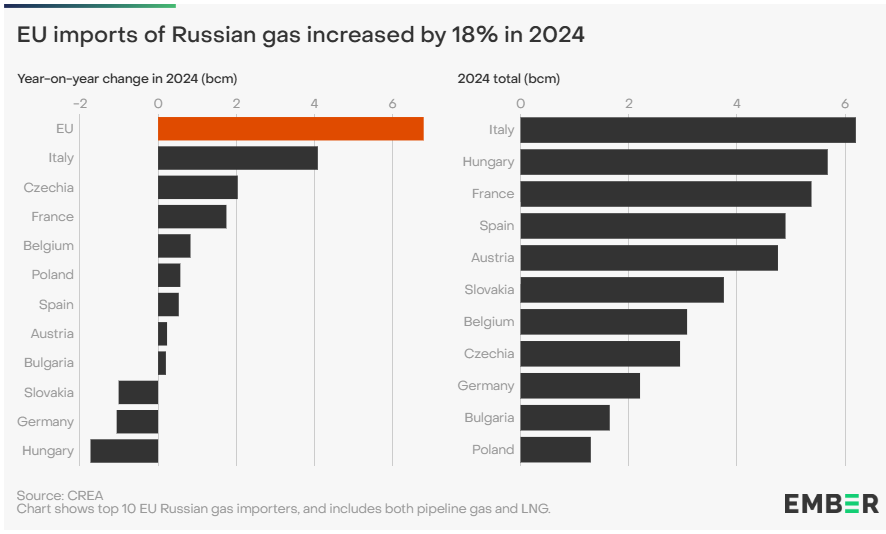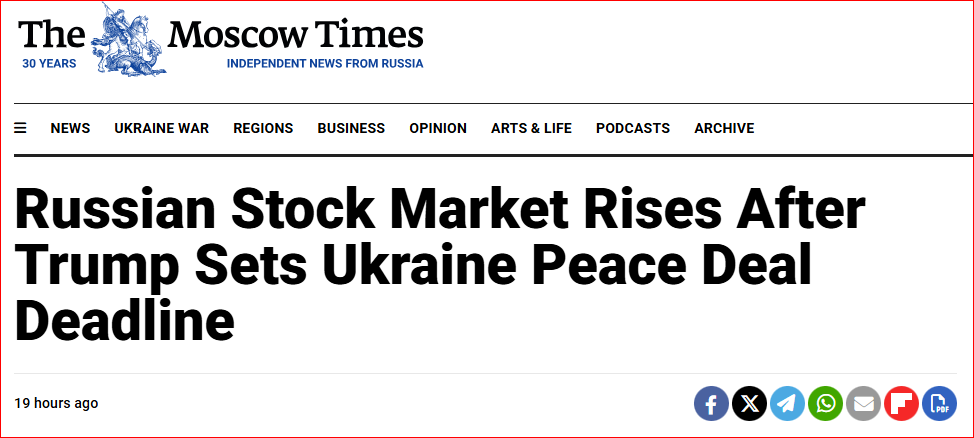Why Trump’s Russia Ultimatum Will Fail—and Backfire
A blistering critique of coercive diplomacy reveals how performative threats, weak leverage, and misplaced assumptions erode U.S. credibility in a multipolar world.
The conceit that deadlines, threats, and tariffs can coerce geopolitical adversaries into submission belongs less to the realm of strategy than to the theater of illusion.
In the first six months of his second term, President Donald Trump unveiled a now-familiar tableau: aggressive rhetoric, high-profile ultimatums, and broad-stroke economic threats dressed up as decisive foreign policy.
His announcement of a 50-day ultimatum for a Russian ceasefire in Ukraine, undergirded by vague warnings of “secondary tarrifs,” was not a demonstration of calculated leverage but rather a manifestation of strategic impatience—a gesture at odds with the exigencies of statecraft.
The core assumption behind this gambit—that Vladimir Putin, having invested his regime's legitimacy in the outcome of the Ukrainian campaign, would abandon that effort under the pressure of a time-limited economic threat—betrays a fundamental misreading of both Russia’s motivations and the structural realities of modern conflict.
What Trump presented was not a credible instrument of coercive diplomacy but a hollow spectacle devoid of the precision, credibility, and follow-through required by serious power politics.
There is no compelling evidence or historical precendent to suggest that Putin will respond to such American economic pressure with meaningful concessions. The invasion and occupation of Ukrainian territory by Russian forces are not discretionary actions or opportunistic adventurism—they represent:
The Kremlin's long-standing pursuit of regional hegemony;
The restoration of what it considers its historical sphere of influence;
The strategic insulation of Russia from perceived Western encirclement.
These objectives are understood by the Russian leadership as existential and non-negotiable. In this context, tariffs—especially when levied on a minuscule bilateral trade volume of just $3 billion in 2024—are strategically trivial. The goods involved, including fertilizers, uranium, and steel, are commodities the United States itself relies upon, further limiting the credibility of the threat.
To issue such a threat is akin to raising a clenched fist while standing on tiptoe: dramatic in appearance, ineffective in practice, and ultimately irrelevant to the conflict’s outcome.
Should the administration instead pursue secondary sanctions—targeting countries such as China or India for their ongoing economic engagement with Moscow—the terrain becomes vastly more hazardous.
These nations are not passive actors beholden to Washington’s directives; they are sovereign powers with their own geostrategic interests, energy dependancies, and regional priorities.
India, for instance, imports discounted Russian oil to ensure domestic economic stability and to maintain strategic autonomy amid U.S.-China rivalry.
China has positioned itself as a systemic counterweight to American primacy, steadily building financial systems and trade routes beyond Washington’s reach.
European states remain economically intertwined with Russia despite security dependence on NATO.
To attempt to force such actors into compliance through threats of punitive tariffs or sanctions is to invite diplomatic rupture, economic retaliation, and fragmentation of the very coalition structure upon which American influence depends.

To threaten allies and major trading partners with economic punishment for decisions aligned with their own national interests is not an act of statesmanship—it is strategic folly. It gambles away American credibility on a bluff that is both transparently weak and dangeroulsy antagonistic.
A policymaking approach informed by the doctrine of strategic restraint would recognize this as a path to isolation, not leadership. In a world no longer defined by unchallenged American hegemony, the illusion that Washington can dictate outcomes unilaterally through coercive measures is a relic of a bygone era.
Absent shared interests, enforceable commitments, and multilateral coordination, economic threats against other sovereign states are likely to collapse under the weight of their internal contradictions and external resistance.
Even assuming such sanctions could be enforced, their ability to significantly degrade Russia’s war effort is questionable at best. The Kremlin has not merely endured the economic siege laid by the West since 2022—it has restructured its economy to function under it.
Russia has developed alternative maritime shipping routes, engaged in currency swaps with China, and employed a sprawling network of third-party intermediaries, including banks and energy brokers in Turkey, the Gulf, and Southeast Asia, to reroute trade and bypass restrictions. Oil revenues continue to flow, defense factories continue to operate, and the ruble remains serviceable within the confines of a wartime economy.
This is not a triumph of ideology but of material resilience. Russia’s geographic expanse, its control over critical natural resources, and its centralized political apparatus have created a wartime state that is difficult to isolate or coerce. That the Russian stock market rose in response to Trump’s tariff announcement is not an anomaly—it is a verdict. Markets, in their unsentimental logic, assessed the threat and concluded it posed no meaningful risk to the Kremlin’s campaign.
In the military domain, the situation is equally stark. The recently publicized NATO-backed aid arrangement—whereby European nations will purchase American-made weapons for Ukraine—may serve symbolic unity but lacks
Keep reading with a 7-day free trial
Subscribe to Post-Liberal Dispatch to keep reading this post and get 7 days of free access to the full post archives.







